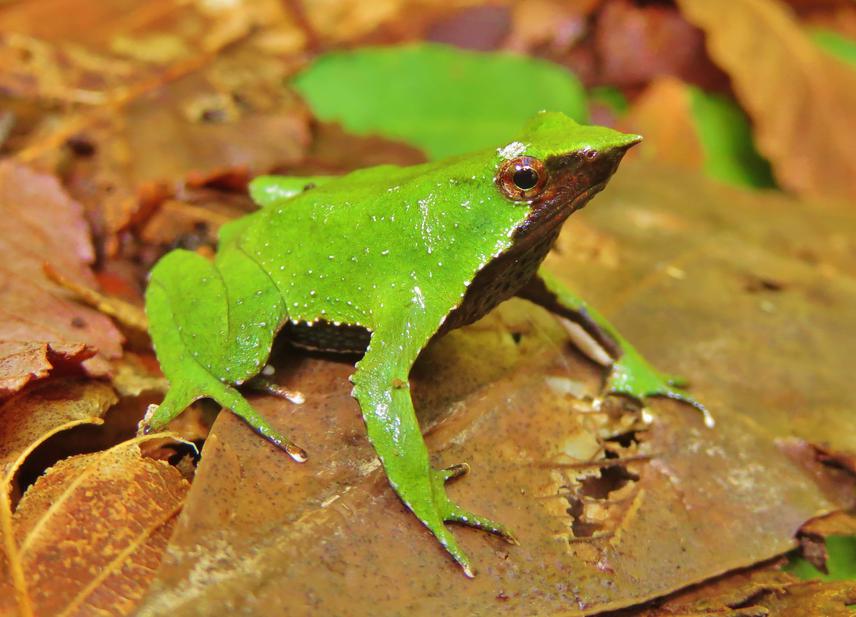Andrés Cristian Valenzuela Sánchez
Other projects
5 Sep 2014
Is Chytridiomicosis a Threat to the Mouth-Brooding Darwin’s Frog (Rhinoderma darwinii)? : A Disease Risk Assessment.
20 Jan 2016
Chytridiomycosis in the Endangered Darwin's Frogs: Developing Models for their Conservation
The aims of this project are:
1) To identify the conditions and characteristics that control metapopulation extinction risk in Darwin’s frogs
2) To develop in-situ mitigation measures against chytridiomycosis in Darwin’s frog populations
3) To continue and strengthen our outreach work about Chilean amphibians and their conservation

A male Darwin's frog from Contulmo, Southern Chile. © Andrés Valenzuela Sánchez
The Darwin’s frogs (Rhinoderma rufum and R. darwinii) have a reproductive strategy which make them unique among the >7,000 world’s amphibians: the male broods its tadpoles inside its vocal sac. Unfortunately, these amazing species, endemic to the native forests of Chile and Argentina, are highly threatened due to anthropogenic activity. Rhinoderma rufum has not been found since 1981 and R. darwinii has suffered extensive extirpations, even within protected areas with unnoticeable habitat degradation. Most likely, these extirpations have (partially) occurred due to the emergence of a disease of amphibians known as chytridiomycosis. Indeed, in a paper recently published in Proceedings of the Royal Society B, we show that this disease causes local extinctions of R. darwinii over a prolonged (~17 years) period of time. This study, was possible thanks to the important support of the Rufford Foundation through two RSGs. With the knowledge gathered during these projects, we are in a very good position to make a decisive leap into developing disease mitigation actions. With the support of this booster grant, such actions will not only help save R. darwinii from the brink of extinction, but will be applicable to the conservation of other amphibians threatened by chytridiomycosis elsewhere.
This project has three main components:
1) basic and applied research in population and disease ecology;
2) applied research about in-situ mitigation actions against chytridiomycosis;
3) outreach activities about Chilean amphibians and their conservation.
First, using R. darwinii as a model, we will improve our understanding about the spatial and temporal dynamics of metapopulations of fully terrestrial amphibians (a diverse and threatened group of animals which inhabits the world’s forests) in human-modified landscapes, a topic that remains poorly understood despite its high relevance in conservation and management. Second, we will increase our knowledge about the spatial dynamics of multi-host infectious diseases, providing an appealing case study of a mitigation action against chytridiomycosis in wild populations of the Darwin’s frog. Considering that this disease 1) has been dubbed as the worst infectious disease ever recorded among vertebrates, and that 2) fully terrestrial amphibians have been found to be highly susceptible to chytridiomycosis, this component of our project will be of worldwide relevance for amphibian conservation, and very likely, for the conservation of other taxa threatened by analogous pathogens. Last but not least, we will continue, and strengthen, our outreach work in order to increase nation-wide public awareness about the importance of Chilean amphibians and their conservation.